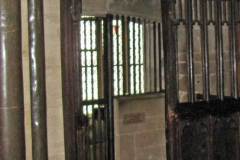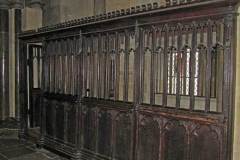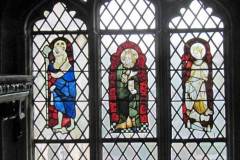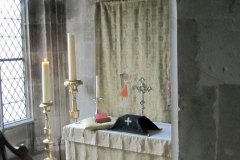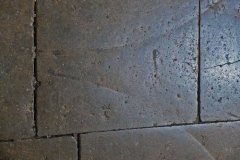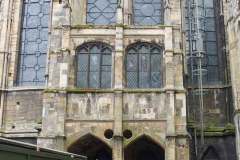The chantry chapel of Edward the Confessor, standing opposite the tomb of Henry IV, is not normally open to the public, but some of the features outlined below can be seen from outside its iron door and grill. The chapel was built around 1440 as directed in the will of Henry IV, to be ‘a chauntre perpetual with twey prestis’ (two priests). It was used in part to store valuable relics, and provides the earliest example of fan vaulting in the cathedral. Much damaged in the dissolution of 1538, the chapel was restored in the 1930s.
What to see (if you can!):
- original heavy iron door and grill, which would have protected relics stored here (Image 1)
- original wooden screen outside which pilgrims could circulate whilst others stopped to pray or admire the relics (Image 2)
- 15th century stained glass depicting (left to right) St Christopher with child; Edward the Confessor; and St Katherine of Alexandria with a segment of the wheel on which she met her death (Image 3)
- modern altar designed by Professor Tristram and installed in 1931 – the curtain above the altar (just visible from outside the chantry door) represents the legend of Edward the Confessor and the ring he gave to a beggar (Image 4)
- indentations of reliquary doors visible on paving stones (Image 5)
- exterior view marred by builders’ shuttering but showing vaults below chapel (Image 6)
Sources: see standard cathedral sources; also Field (1895)
DL

